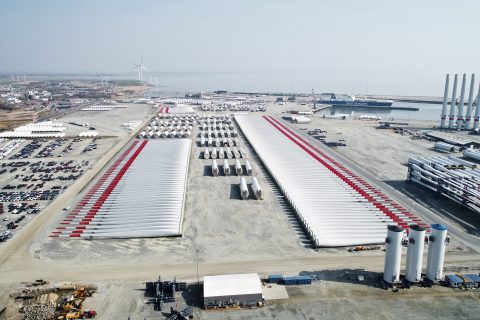
Digital twin to help triple offshore wind shipping capacity at Port Esbjerg
Digital twin to help triple offshore wind shipping capacity at Port Esbjerg Port Esbjerg
Port Esbjerg is set to triple its annual offshore wind installations shipping capacity with the implementation of a digital twin. Esbjerg is the first port to get the digital twin, enabling it to calculate efficient methods for deploying offshore wind installation.
Want to read more?
You have read all of your free premium articles for this month. Please become a subscriber to keep reading.
Subscribe now!
Take advantage of our exclusive offer to get full access to all premium content.




